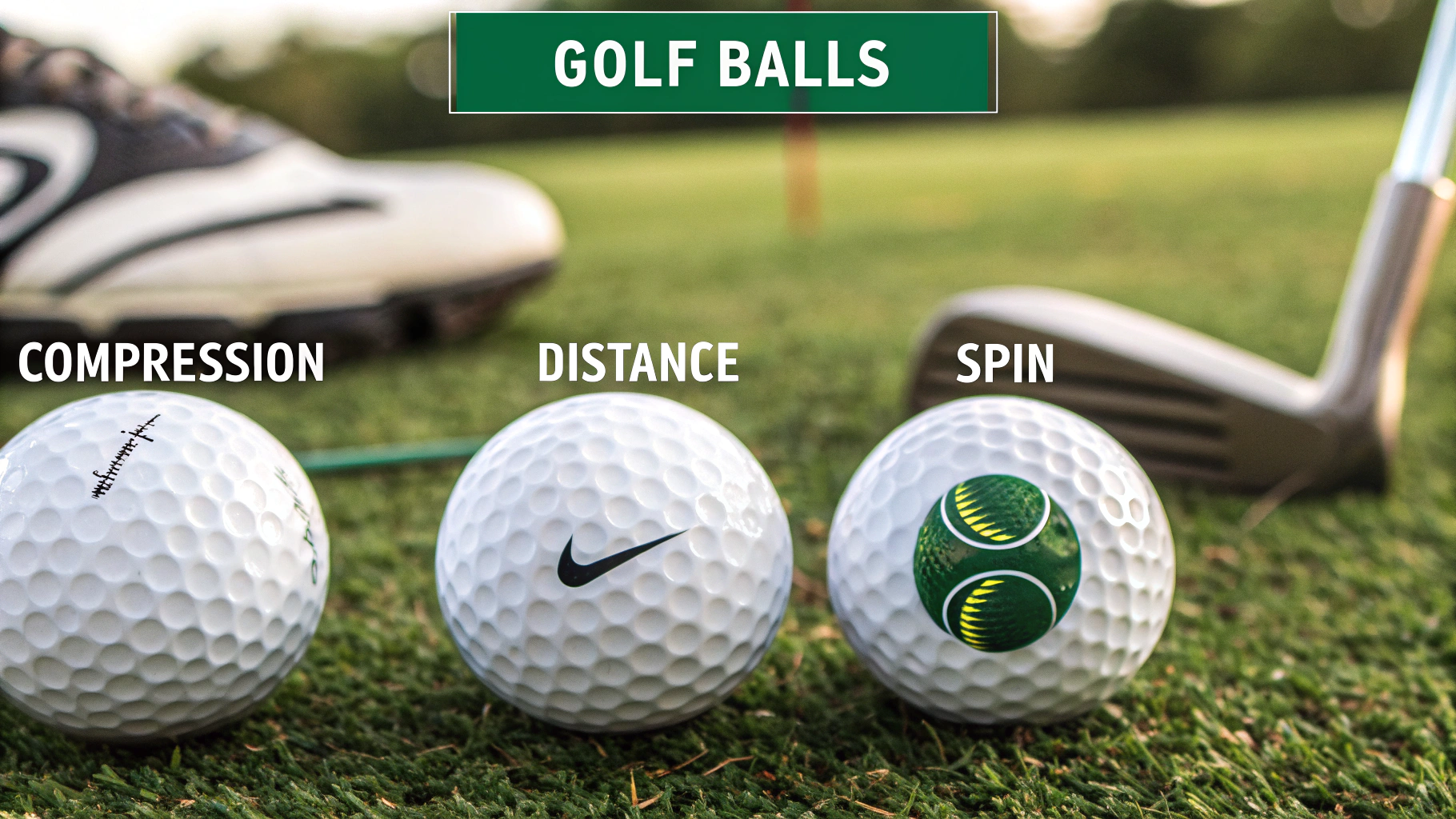Choosing the right golf ball is crucial for achieving optimal performance on the course. From understanding the historical evolution of golf ball design to deciphering technical specifications, this comprehensive guide will help players of all skill levels select the right golf ball based on their specific requirements. Whether you're a novice or an experienced golfer, you'll find detailed comparisons, practical recommendations, and expert insights to inform your decision-making process.
Introduction
The golf ball has come a long way since its inception in the 15th century, evolving from wooden spheres to tightly engineered objects designed for aerodynamic precision. Regulations set by governing bodies like the United States Golf Association (USGA) and The R&A ensure uniformity and fairness in the game. These specifications matter for both competitive integrity and for enhancing players' performance.
Golf ball standards outline critical features such as weight, size, spherical symmetry, and performance attributes. Conforming to these standards is essential for competitive play, while recreational players may prioritize ease of use, budget, or personal preference.
Standard Measurements & Specifications
Official golf ball measurements and specifications are regulated to ensure consistency and performance. Below is a detailed table outlining standard measurements along with permissible variations:
| Specification | Professional Standard | Amateur Standard | Youth Standard | Metric | Imperial |
|---|---|---|---|---|---|
| Diameter | 42.67 mm | 42.67 mm | 40 mm | 42.67 mm | 1.68 inches |
| Weight | 45.93 grams | 45.93 grams | 40 grams | 45.93 grams | 1.62 ounces |
| Compression Rating | 90-100 | 70-90 | 50-70 | - | - |
Key Measurements Explained:
- Diameter: The size of the ball plays a critical role in how it interacts with the club and air resistance.
- Weight: A heavier ball delivers greater momentum, while a lighter one caters to slower swing speeds.
- Compression Rating: Indicates how much the ball compresses upon impact. Players with faster swings need higher compression ratings.
Understanding Key Components
Golf balls consist of several critical components, each contributing to their unique characteristics:
- Core: The inner core is often made of rubber or advanced materials like synthetic polymers. It determines the ball's energy transfer and overall distance during play.
- Cover: The outer cover, made of Surlyn or urethane, affects durability, spin, and feel.
- Dimples: Dimples are scientifically designed to improve aerodynamic properties by reducing drag and increasing lift.
- Markings: Essential for tracking during play and confirming compliance with regulations. These typically include the manufacturer's name, model, and alignment aids.
Material Requirements:
| Component | Material | Primary Purpose |
|---|---|---|
| Core | Rubber/Synthetic Polymer | Energy Transfer, Distance |
| Cover | Urethane/Surlyn | Durability, Spin Control |
| Dimples | Surface Texture | Aerodynamics |
Different Variations
Golf balls differ across geographic regions, levels of competition, and age groups:
- International Standards: Conform to USGA and R&A guidelines, ensuring equivalence across global tournaments.
- Regional Differences: Some regions may prioritize durability or budget-friendly materials for casual play.
- Competition vs. Recreational Specifications: Competitive balls feature advanced technologies (e.g., multi-layer cores) to optimize performance, while recreational balls focus on ease of play.
- Age-Specific Modifications: Youth golf balls tend to be lighter and softer to accommodate slower swing speeds and promote skill development.
Practical Considerations
A golf ball's lifespan and performance are influenced by proper handling and use. Below are practical considerations:
- Storage Requirements: Store golf balls between 10°C to 30°C (50°F to 86°F) to preserve material integrity.
- Setup Guidelines: For practice settings, avoid overly hard surfaces to prevent wear and tear.
- Maintenance Tips: Clean golf balls regularly to maintain surface aerodynamics.
- Common Mistakes: Avoid using damaged or waterlogged balls, as this compromises performance.
Selection Guide
Here’s a step-by-step guide for selecting the perfect golf ball:
- Skill Level: Beginners should opt for low-compression balls offering forgiveness, while advanced players may seek high-performance models.
- Budget: Affordable two-piece balls are ideal for amateurs, whereas tour-grade multi-layer balls cater to professionals.
- Brand Preferences: Popular brands include Titleist, Callaway, TaylorMade, and Bridgestone, each offering diverse options.
- Aerodynamic Performance: Choose balls with optimized dimple patterns for enhanced flight consistency.
FAQs
Below are answers to common questions about golf ball selection:
- What’s the difference between a two-piece and multi-layer ball? Two-piece balls feature a solid core and durable cover, while multi-layer balls have additional layers for spin and precision.
- Are expensive golf balls worth it? Higher-priced balls often offer advanced performance features but may not be necessary for casual players.
- How does compression impact my game? Compression affects ball responsiveness; choose based on your swing speed.
- Do dimples really matter? Yes, dimples optimize airflow for increased distance and stability.
- Can I use any golf ball for tournaments? No, tournament balls must adhere to governing body standards.
Tips and Best Practices
Maximize your performance on the course with these expert tips:
- Understand Your Swing Speed: Match ball compression to your speed for better results.
- Try Before You Commit: Test different models during practice rounds to find your perfect fit.
- Replace Damaged Balls: Balls with cuts or extreme wear should be swapped out immediately.
- Prioritize Short Game Feel: Advanced players should focus on balls that deliver better spin and control around the green.
In conclusion, selecting the right golf ball is a nuanced process that involves balancing performance requirements, skill level, and budget. By understanding the components, variations, and specifications, golfers can make informed choices to enhance their game. Regular maintenance and proper storage are also crucial for sustaining optimal performance, making golf ball selection both a science and an art.











 浙公网安备
33010002000092号
浙公网安备
33010002000092号 浙B2-20120091-4
浙B2-20120091-4